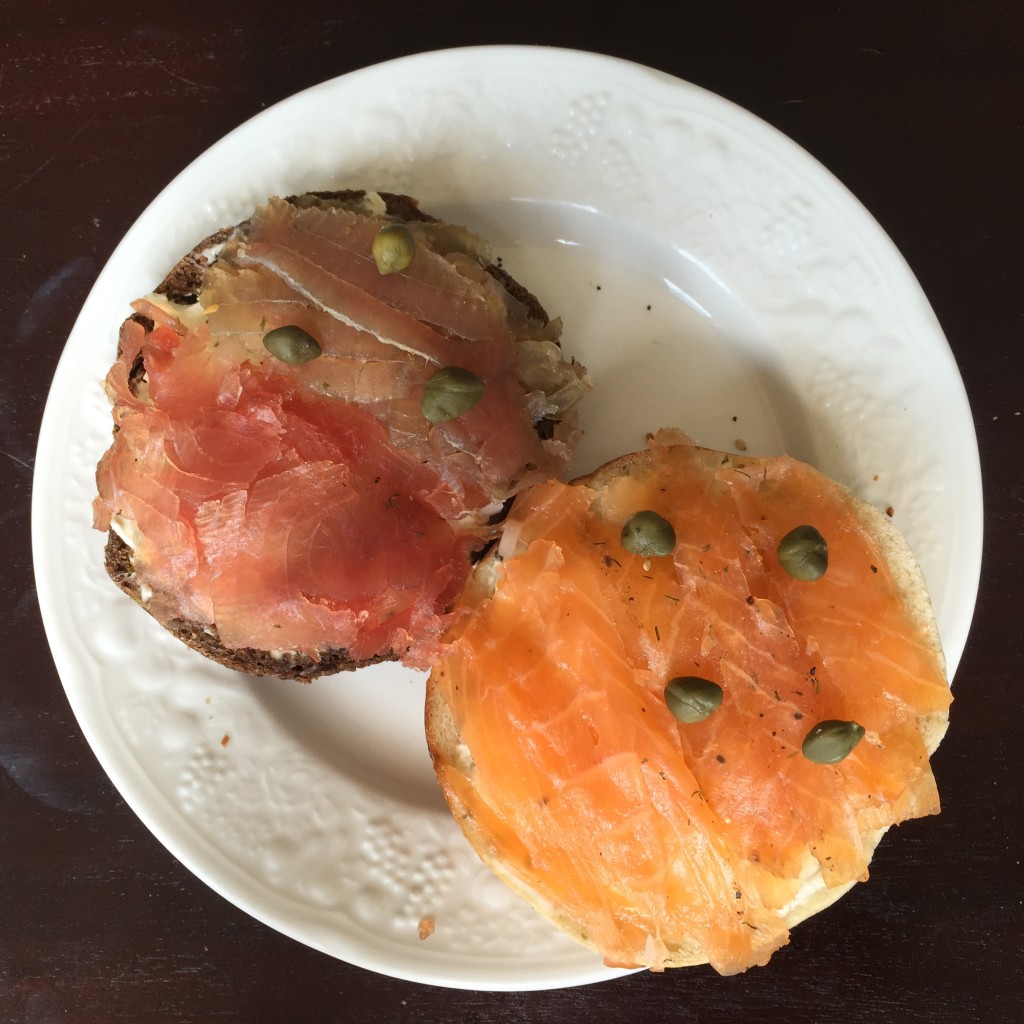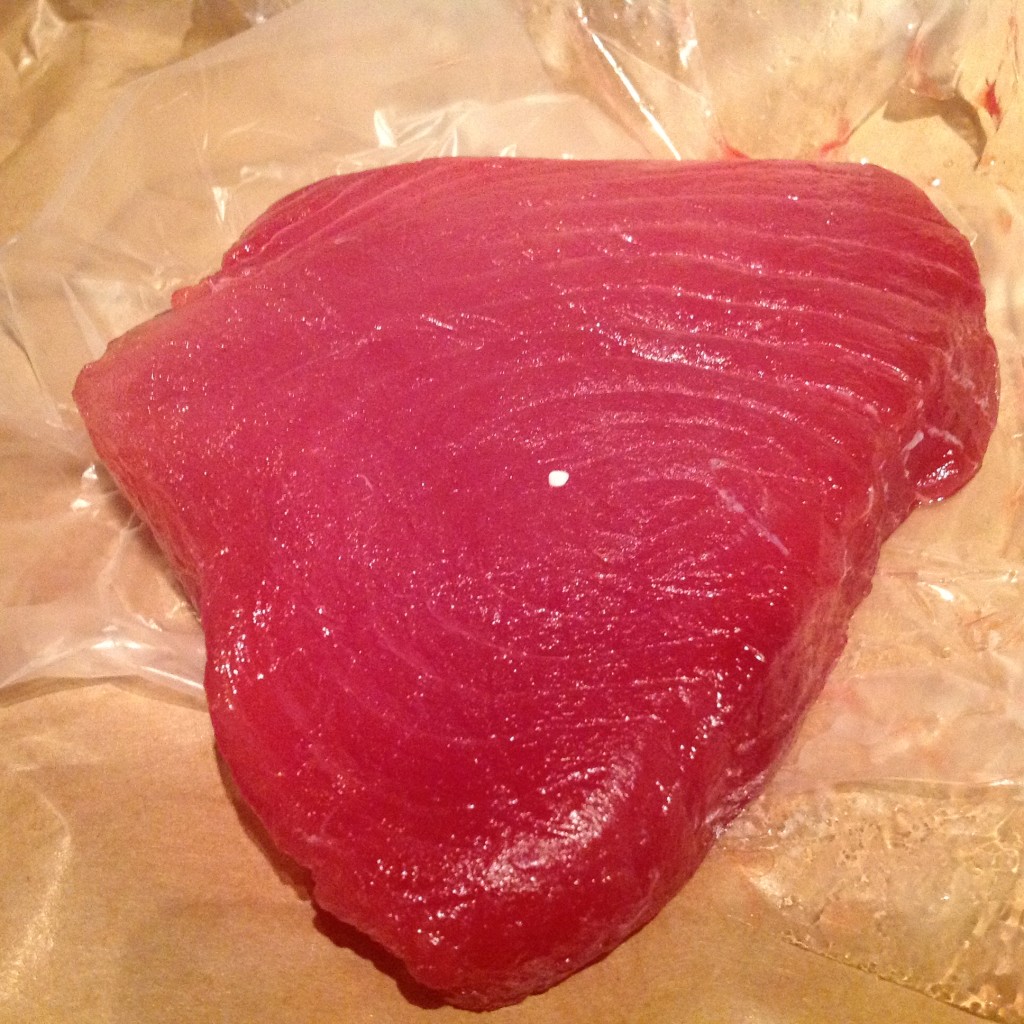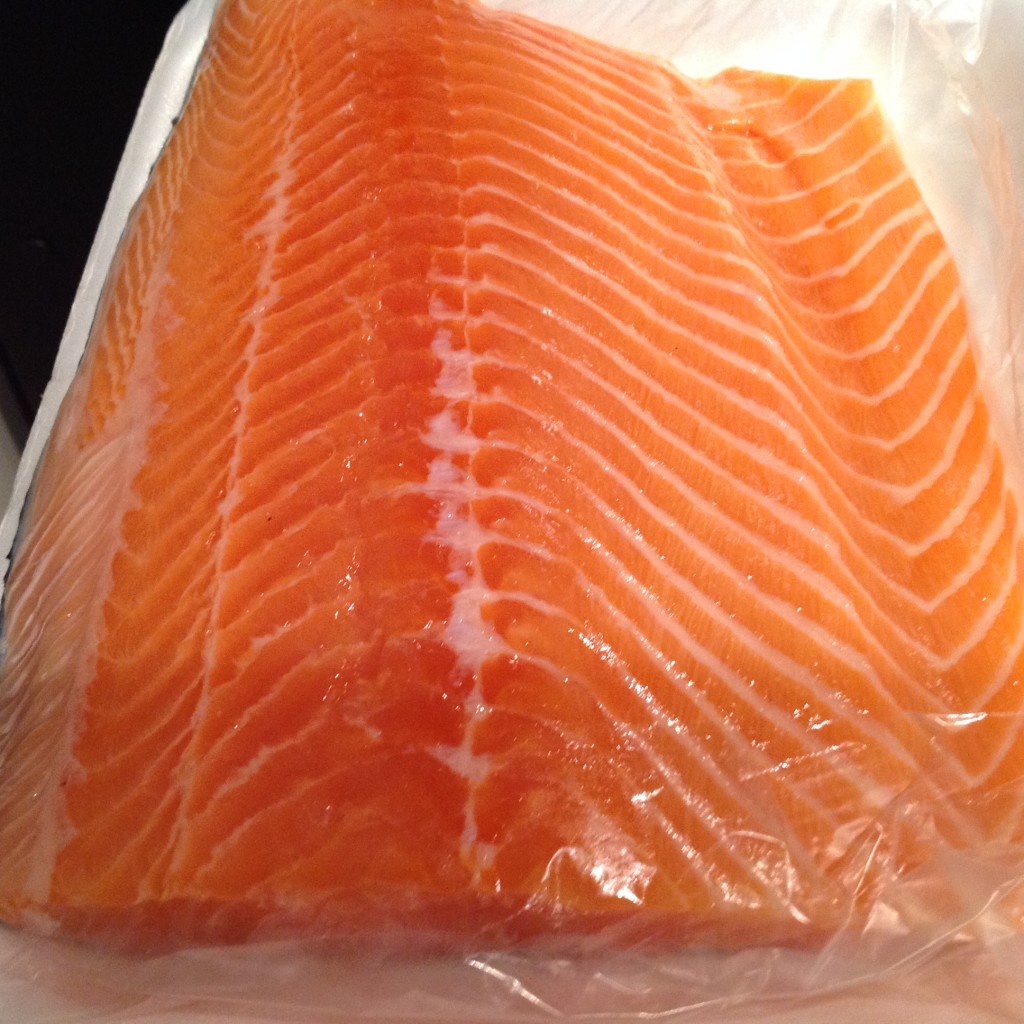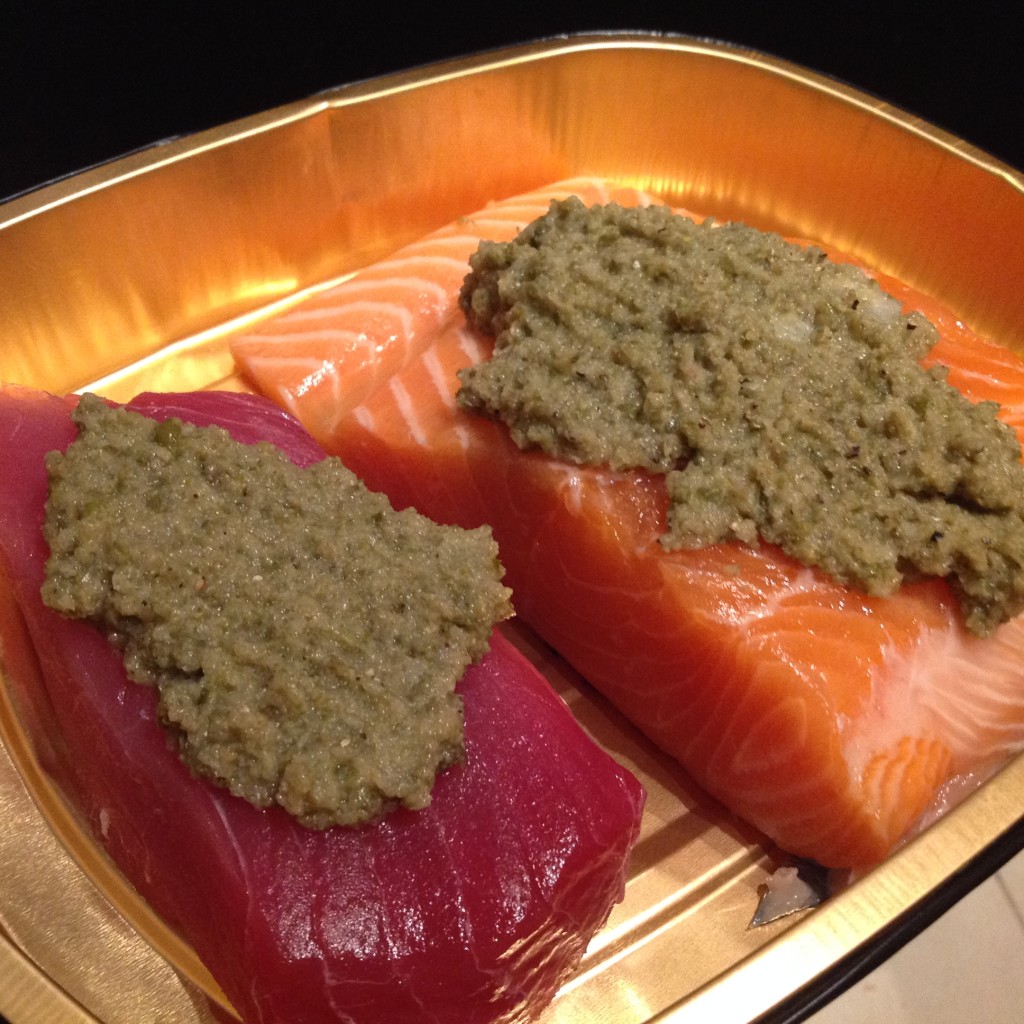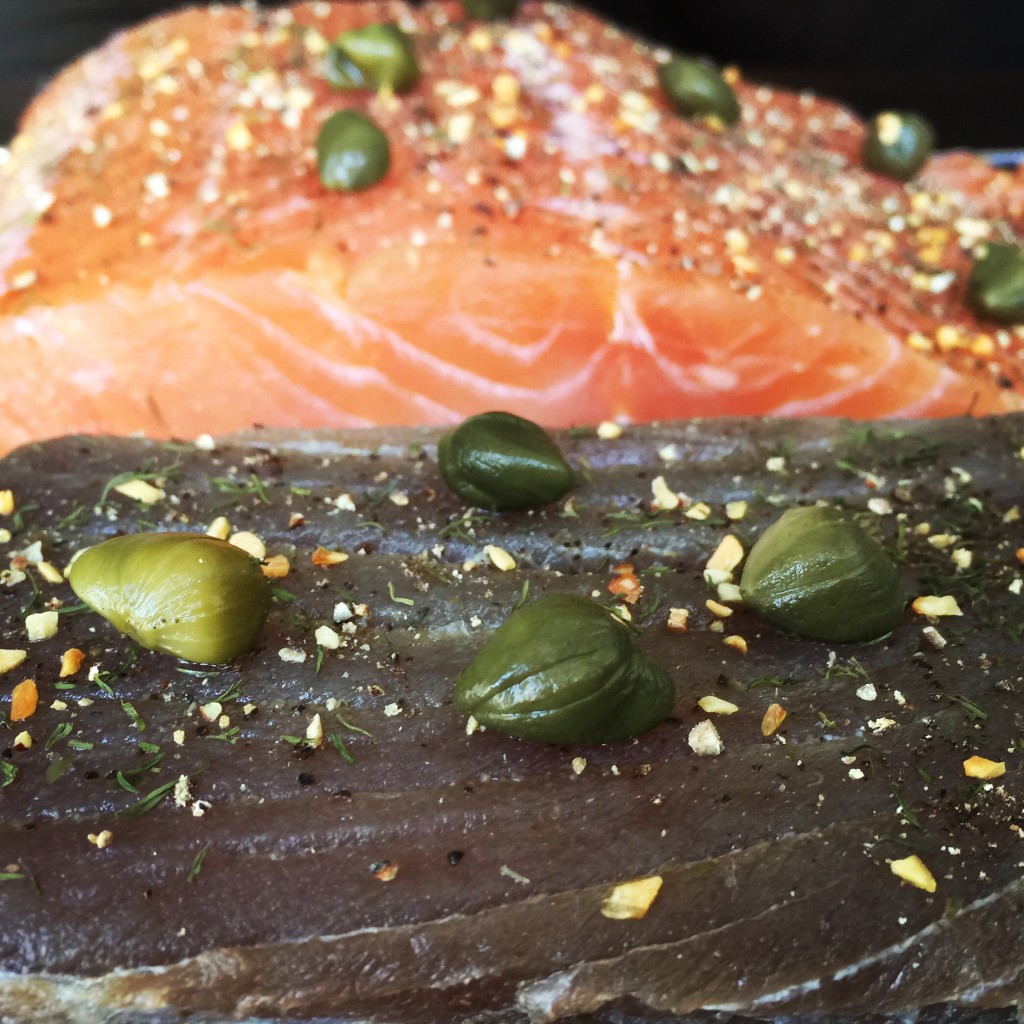Everyone knows that lox is generally made with salmon. However, after doing some experimenting with mosciame/mojama/tuna prosciutto as discussed in detail in previous posts, I started to wonder why no one ever made tuna lox. People eat raw tuna, they eat cured and aged tuna, but I haven’t ever seen anyone eating just cured tuna, or tuna lox. So, I decided to give it a go.
In addition to generally being made with salmon, lox tends to be adorned with capers after it has been cured, but it is not generally cured with capers. This means the caper flavor never really permeated the flavor of the lox. I decided to experiment with this as well, to see if a caper cure added a beneficial flavor to the lox.
This post will detail my 4 condition lox experiment: control salmon lox, control tuna lox, caper salmon lox, and caper tuna lox.
The Fish:
For this experiment, I bought pieces of salmon and sushi grade ahi tuna.
The Cure:
For the control cure, I used my normal 1:1 ratio of brown sugar:salt. For the caper cure, I blended salt cured capers and added it to a 1:1 cure of brown sugar:salt.
Curing (24 hour):
I let the fish cure for 24 hours in this excess cure in order to maximize the effect of adding the capers. Ideally, it would cure longer to let the caper flavor to permeate the fish better. However, when using an excess cure this is not an option. In the future, I plan to try this with an equilibrium cure to allow for longer curing times.
Tasting:
The tasting for these experiments was very interesting! The control tuna really took on the sweetness of the cure more than the salmon did. I didn’t expect the control tuna to taste too much different than raw tuna does, but the cure really added a level of complexity. It was really cool to see how the flavor of the salmon and tuna both changed from the simple addition of a cure. In the future, I will be curing more tuna lox as an alternative to the traditional salmon lox!
The caper tuna and salmon was a pretty cool experiment as well. The fish really took on a green tinge from the cure which may be a discouraging factor from a restaurant point of view, but from a home curer’s point is more of a point of fascination. The flavor was not as strong as I would have liked, and in the future I think I will repeat this experiment with an equilibrium cure with a longer cure time. Overall though, it had a subtle caper taste that really complimented both the flavor of the tuna and salmon lox. A perfect way to pair the flavor of capers with lox, without the strong flavor that accompanies biting into a caper itself.
So, was curing tuna a good idea? Was adding capers to the cure a good idea? YES! Both of these experiments yielded promising results that I was able to enjoy, as well as to confuse friends and family with. Tuna lox, the new food craze of the year. You heard it here first!
Disclaimer: Curing fish is a hobby that comes with inherent risks. We can all do things to limit this risk by educating ourselves about the process and the utilizing the safest known methods to create our products. This website is for educational purposes only, and all experimentation should be done at each individuals own risk.
